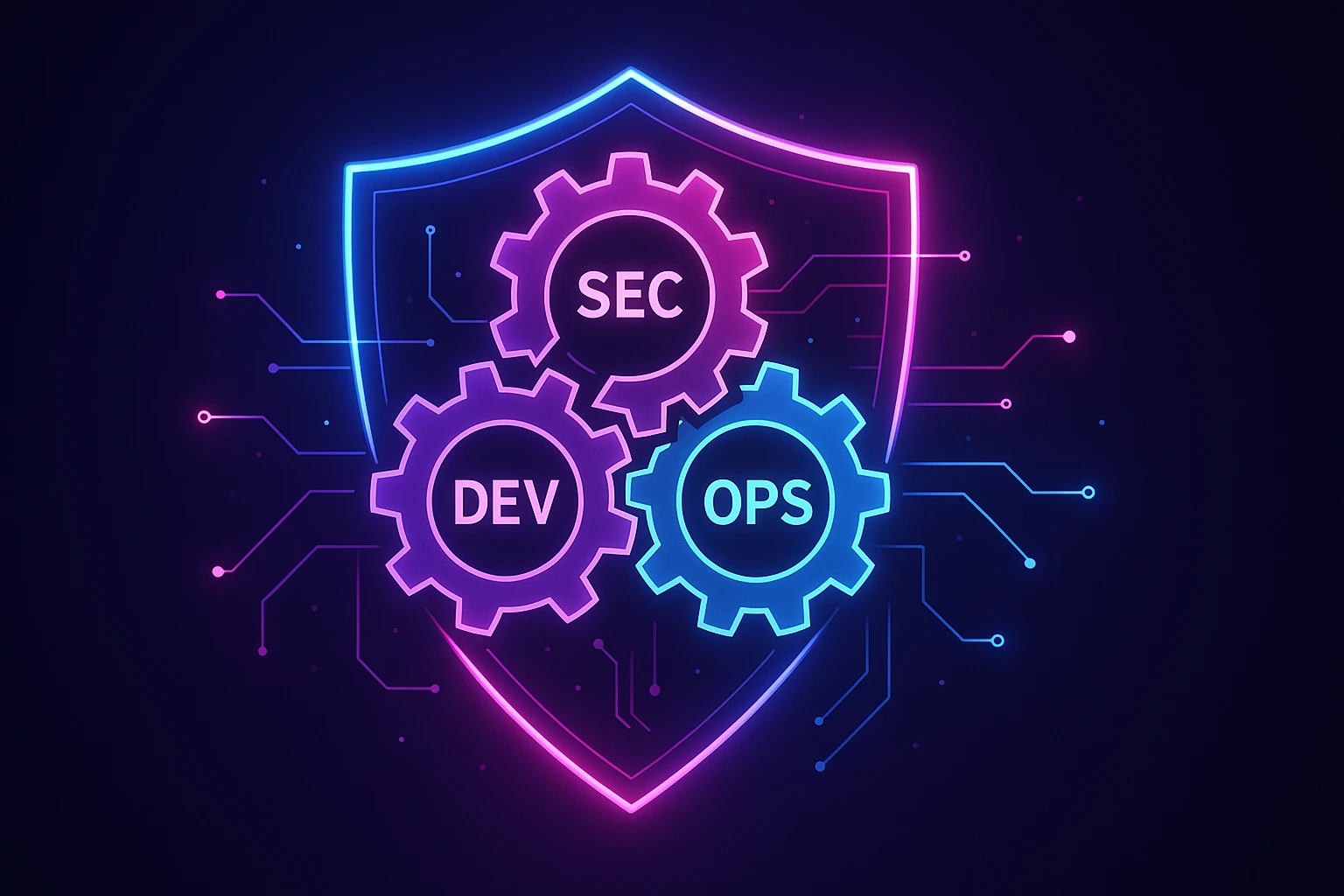The General Data Protection Regulation (GDPR) establishes strict guidelines for processing personal data of EU residents, requiring transparency, a clear purpose, and robust security. Salesforce implementations are directly affected as the platform routinely stores personal identifiers across multiple objects.
Non-compliance carries severe consequences—fines up to €20 million or 4% of global annual revenue, plus reputational damage that can derail critical projects. However, proper GDPR adherence offers tangible benefits:
- Improved data quality
- Enhanced reporting accuracy
- Strengthened customer trust
- Reduced storage costs
- Simplified system architecture
This guide converts complex regulatory requirements into actionable Salesforce configurations. You'll discover practical approaches for data auditing, privacy-focused security, rights automation, and sustainable compliance—all while preserving Salesforce's business value and user experience.
Understanding GDPR Fundamentals in Salesforce Context
Before diving into technical configurations, it's crucial to understand how GDPR's core requirements translate into specific Salesforce objects, fields, and administrative tasks. Many organizations approach GDPR compliance as a legal checkbox exercise, but in reality, it's a fundamental shift in how you architect and operate your Salesforce environment. A principle like "data minimization" isn't abstract when you're deciding whether to make a custom field mandatory on the Lead object, and "accountability" becomes concrete when you're configuring field history tracking that auditors will scrutinize.
This section bridges the gap between regulatory theory and Salesforce practice. You'll learn how each GDPR principle creates specific technical requirements in your org, how the six legal bases for processing translate into trackable data points, and how data subject rights become operational workflows that your team executes daily.
The 7 Principles of GDPR Compliance
GDPR operates on seven principles that serve as the foundation for all compliance efforts. These core principles aren't merely theoretical concepts—they translate directly into Salesforce configuration tasks and implementation requirements that organizations must address.
- Lawfulness, Fairness, and Transparency require every record in Leads, Contacts, Accounts, or custom objects to have a documented legal basis for processing and visible privacy notices. This means exposing those notices wherever data is collected—web-to-lead forms, customer communities, or API integrations—so people always know why their data sits in your org.
- Purpose Limitation prevents silent "scope creep" where marketing data suddenly supports profiling or product development. Segment data in separate record types, campaigns, or entirely different objects to maintain clear boundaries.
- Data Minimization makes only absolutely necessary fields mandatory. If a field rarely contains information needed for operations, re-label it as optional, hide it behind field-level security, or deprecate it.
- Accuracy relies on validation rules, duplicate-prevention tools, and scheduled data-quality dashboards to keep personal details current and correct.
- Storage Limitation requires retention policies and scheduled Flows that delete or anonymise stale records to prevent indefinite hoarding of EU data.
- Integrity and Confidentiality use role hierarchies, permission sets, and Platform Encryption to protect data against unauthorized access or loss.
- Accountability demands a Setup Audit Trail, field history tracking, and a written Record of Processing Activities to demonstrate compliance on demand. These aren't suggestions—they're operational requirements that auditors will check.
The 6 Legal Bases for Data Processing Under GDPR
Personal data in Salesforce extends beyond obvious identifiers. Names, emails, phone numbers, and addresses stored on standard objects all qualify, but so do custom-field combinations that can single out an individual—"Loyalty Card Number" on a custom Membership object or "Patient ID" in a healthcare org. Files, Chatter posts, and debug logs carry the same regulatory weight if they reference a living person.
The regulation recognizes six legal bases for data processing:
- Consent gets captured in the Individual object and stamped with a date-time for proof.
- Contract covers order processing data tied to an Opportunity that fulfills a signed agreement.
- Legal Obligation justifies invoices retained to satisfy tax authorities.
- Vital Interests protects emergency contact data for employees stored in HR apps.
- Public Task applies to government departments running public-service portals on Experience Cloud.
- Legitimate Interests covers internal analytics on product usage, balanced against data-subject expectations.
Each basis must be mapped to the relevant object and documented so auditors can trace every processing activity back to its justification. Beyond establishing lawful grounds for processing, GDPR compliance demands operational systems that support individual rights throughout the data lifecycle. Organizations must transform abstract legal requirements into concrete technical capabilities that function reliably at scale.
The following data-subject rights create specific operational requirements for day-to-day administration:
- Data-subject Rights create operational requirements for day-to-day administration.
- Right of Access translates into building repeatable report exports.
- Rectification requires editable screens with validation.
- Erasure calls for destructive Flows that cascade deletes to related objects while respecting retention exemptions.
- Portability means standardized CSV or XML exports.
- Objections and Restrictions become boolean flags that drive automation to pause specific workflows.
9 Steps for Conducting a Comprehensive GDPR Data Assessment
A thorough data assessment forms the foundation of every effective compliance program. In Salesforce, this process goes beyond counting Contacts and Leads—it traces how every fragment of personal data enters, moves through, and exits the platform. This structured approach surfaces blind spots before regulators or customers discover them.
1. Define a Clear Audit Scope
Begin by establishing precise objectives for your assessment, such as validating compliance status, enhancing data quality, or preparing for new system integrations. Document which business units, Salesforce orgs, and connected systems fall within scope. Without these defined boundaries, audits quickly lose focus and momentum.
2. Assemble a Cross-Functional Team
Form a team that combines technical expertise with legal oversight: a senior admin or architect, data privacy officer, system integrator, and process owners from Sales, Service, and Marketing. Implement a defined RACI matrix to prevent gaps when questions about custom code or legal retention requirements arise.
3. Map Business Processes First
Interview each department about how it collects and uses personal data before examining technical objects. Only after understanding these workflows should you list the Salesforce objects involved—both standard (Leads, Contacts, Accounts, Cases) and custom. Skipping this business-first approach often results in overlooking personal data buried in niche custom objects or managed-package tables.
4. Inventory All Data Storage Locations
For each object, catalog every field that can hold personal identifiers: names, emails, national IDs, IP addresses. Extend your investigation to Files and attachments, Chatter posts and comments, Activity history and archived tasks, Field history tracking tables, and Big Objects or external objects synced from data lakes. Personal data frequently hides in free-text notes or PDF invoices uploaded to Files—areas many teams overlook during routine administration.
5. Create Data Flow Diagrams
Develop a swim-lane diagram that illustrates how data travels among Salesforce, marketing automation tools, ERP systems, and external analytics platforms. Every API call, outbound message, or ETL job must appear on the map. A clear visualization accelerates later Data Protection Impact Assessments and simplifies vendor due diligence.
6. Apply Data Classification Tags
Once locations are known, apply Salesforce Data Classification tags to each field—'Personal,' 'Sensitive,' or 'Highly Sensitive.' This tagging provides essential metadata to inform and guide downstream controls such as field-level security, encryption, and Shield Platform Encryption policies. The practice aligns with the ICO's data protection principles.
7. Document Retention Policies
Catalog existing retention periods, deletion schedules, and archive processes for every data set. Many organizations keep customer data indefinitely because automated purges were never wired into Flows or Apex. Capture the business or legal justification for exceptions such as statutory financial records.
8. Conduct Data Protection Impact Assessments
A DPIA becomes mandatory when processing could result in "high risk to the rights and freedoms" of individuals, common in large-scale profiling, health data handling, or cross-border transfers. Each assessment should describe the processing purpose and scope, assess the likelihood and severity of harm, list mitigating safeguards (encryption, pseudonymisation, access controls), and record residual risk with sign-off from the Data Protection Officer.
9. Synthesize Findings Into Action Plan
Consolidate all findings into a living document with minimum columns: Object/Field, Data Category, Sensitivity Tag, Retention Rule, Legal Basis, Integrations, DPIA Required (Y/N), Remediation Priority. Update this file after every new app rollout or schema change. Sort the checklist by sensitivity and exposure to prioritize high-risk data for immediate remediation.
Final deliverables should plug straight into operational workflows: Jira tickets for field-level security changes, CI/CD tasks for deploying new sharing rules, or scheduled Flows that redact obsolete attachments. Treat the assessment as a pre-deployment gate—no schema change moves to production without an updated data map.
Building GDPR-Compliant Salesforce Foundations
Unchecked data growth and over-permissive access violate the regulation's integrity, confidentiality, and storage-limitation principles. Salesforce provides the building blocks to tighten controls, but organizations must assemble them into a compliant foundation.
Access Control Forms the Foundation
Revisit organization-wide defaults and set every object containing personal data to Private unless a clear business case dictates otherwise. Refine exposure through role hierarchies, profiles, and permission sets. Field-level security is non-negotiable: mask national IDs, birth dates, or health details at the profile level so only staff with documented need can view them. Share records via criteria-based sharing rules rather than broad public groups to limit downstream proliferation when data moves into reports, dashboards, and exports.
Security Controls Require Continuous Auditing
Activate field history tracking for every sensitive field—Salesforce caps the native history table at 20 fields per object and 18 months of retention, so choose wisely and export regularly. Add Setup Audit Trail to capture configuration changes and enable Login History to surface suspicious log-ins. These logs satisfy the regulation's accountability requirement by showing when a record was viewed, altered, or deleted, and by whom.
Privacy by Design Must Start at Development
Before developers create custom objects, require them to classify every field with Salesforce's data classification tags and set the default permission to "Hidden." Validation rules should block record creation unless the user links a Contact or Lead to an Individual record, centralising consent. In Flows and Apex, add decision diamonds that stop outbound integrations when consent has lapsed.
Written Retention Schedules Drive Data Lifecycle Management
The regulation demands that personal data live no longer than necessary. Begin with a written retention schedule that pairs each object with a legal basis and maximum retention period—customer cases, for example, might stay five years post-closure. Scheduled Flows can then query records older than the threshold, route them to an approval queue, and hard-delete or anonymise once approved. Test these automations in a full sandbox to avoid cascading deletes. Deletion must propagate to files, chatter posts, and backups; otherwise, residual copies could breach the storage-limitation principle.
Platform Encryption Keys Protect Custom Components
For custom Lightning components, incorporate Platform Encryption keys—encrypted fields still function in search, formula, and workflow operations without exposing raw values in logs or sandboxes. Native features form a solid baseline, yet gaps remain. Field history limits make long-term audits difficult, and Salesforce deletes remain reversible in the Recycle Bin for only 15 days.
Building a compliant foundation is an iterative process: restrict access, log every action, design with privacy defaults, and automate retention. This approach creates a privacy-first environment without sacrificing agility or user experience.
Implementing Data Subject Rights Management
Turning data subject rights from regulatory requirements into daily operations requires clear processes, reliable automation, and auditable records. Each right translates into a repeatable Salesforce workflow, built around the Individual object for centralized consent management.
Right to Be Informed
The right to be informed starts with accessible privacy notices. Create a web-to-lead form that posts directly into Salesforce and links to a Lightning Web Component storing the current privacy notice version in a custom metadata record. That version number stamps onto the Lead, Contact, or Case, capturing personal data. When regulators ask when somebody was informed, the notice and timestamp are linked to the original record.
Right of Access
Right of access works through a Case record type called "Subject Access Request." A screen Flow walks service agents through verification steps, then (with custom Apex code) generates a CSV export of all related objects—Contact, Opportunities, Cases, Activities, plus custom objects. The file can be stored in Salesforce Files, encrypted if Shield is enabled, and shared through a secure, expiring link. Every interaction can be logged in the Case, demonstrating accountability without spreadsheets.
Rectification Workflows
Rectification workflows depend on data quality rules. Create validation rules that block record save if users enter flawed data ("@test.com" email domains, for example). When a rectification request arrives, a Flow surfaces all fields with the "Personal Data" classification tag and allows an agent—or the customer via Experience Cloud—to update them in one pass. Classified fields help teams focus only on what matters.
Erasure
Erasure requires more than a Delete button. Build a two-step approval process: once an erasure request Case is approved, a scheduled Flow anonymizes or deletes the Contact and cascades through related child records. Sensitive fields are first scrambled to preserve reporting integrity when full deletion isn't possible due to legal holds. The process logs every action to Setup Audit Trail and flags the Individual record with "Erasure Completed."
Data Portability
Data portability packages the subject's data in a structured, machine-readable format. A reusable Apex class assembles a JSON file mirroring the Contact schema, including custom objects and consent history. Because the solution uses standard APIs, it remains compatible with encryption and future object changes—an approach recommended by privacy engineers.
Objection and Restriction
Objection and restriction both depend on preference data being accessible across marketing, sales, and service. Add two Boolean fields to the Individual object—"Processing Restricted" and "Objection Raised." Wherever data flows into Salesforce (Marketing Cloud, web forms, partner portals), a Platform Event checks those flags; if set to true, downstream automations pause, and marketers see a dynamic component warning that outreach is blocked.
Centralizing Consent
Centralizing consent through the Individual object provides the foundation. After enabling the Individual object, link every Contact and Lead with an after-insert trigger or Flow. Create custom picklists such as "Legal Basis for Processing" with values for Consent, Contract, Legitimate Interest, and the other four lawful bases. When a prospect signs up for a webinar, a Flow writes "Marketing Consent" as the purpose, stores a timestamp, and references the privacy notice version. When consent is withdrawn, a link in every email triggers a simple REST call, and another Flow flips the relevant flag and triggers a Platform Event that halts any queued journeys.
Documenting Fulfillment
Documenting fulfillment happens through Cases: each rights request lives as a Case with a related list capturing key metrics—request date, response date, data delivered, and resolver. A custom report type aggregates Cases by the right category, giving DPOs instant insight into turnaround times. Draft email templates for each right, then attach them to Quick Actions inside the Case layout; service teams click once, adjust a name, and send.
These configurations create a defensible, repeatable framework for data subject rights. They satisfy the regulation's accountability principle without forcing admins to juggle manual spreadsheets, and they keep every action inside the Salesforce audit perimeter.
Managing Third-Party Integrations and Vendor Compliance
Salesforce rarely operates in isolation. Marketing automation, billing platforms, analytics engines, and AppExchange packages all tap into its APIs, turning your CRM into a hub of interconnected processors and sub-processors. Each external system that touches personal data must meet the same privacy and security standards that govern the core organization.
Vendor Due Diligence
Vendor due diligence starts before the first API call. Catalog every integration, describing what data moves, how often, and why the transfer is needed—an exercise that surfaces shadow IT and redundant tools that quietly copy personal data off the platform. Once you have the full list, request each vendor's security documentation, penetration-test summaries, and compliance attestations. A signed Data Processing Agreement should spell out responsibilities, incident-response timelines, and breach notification channels.
Secure Configuration
Secure configuration is the next layer. All integrations should authenticate with short-lived OAuth tokens, restrict logins to trusted IP ranges, and use TLS 1.2 or higher for transport encryption. Where sensitive fields leave Salesforce, Platform Encryption keys protect the data at rest within Salesforce; external systems must implement their own encryption to protect exported data. Build Event Monitoring dashboards to flag anomalous traffic patterns or repeated failed authentications so security teams can react before a minor glitch becomes a reportable incident.
Cross-Border Transfers
Cross-border transfers deserve special scrutiny. If an integration routes data to a processor outside the U.K. or EU, document whether the destination country benefits from an adequacy decision. When it does not, Standard Contractual Clauses must be signed and a transfer impact assessment completed. Store those documents alongside the vendor's DPA so auditors can trace the legal chain without hunting through email threads.
Ongoing Oversight
Ongoing oversight is where many programs stall. Revisit integration inventories quarterly and verify that vendors have not expanded data scope or changed hosting locations. Introduce a lightweight renewal questionnaire that covers penetration-test cadence, encryption updates, and sub-processor changes. Any negative response should trigger a risk review and, if needed, a remediation plan or service suspension.
Documentation Management
Maintain a centrally accessible repository with version control and retention rules for all compliance documents. File DPAs, SCCs, audit reports, and renewal questionnaires together. Add a metadata field linking each document to the corresponding Connected App or named credential inside Salesforce. That relationship makes it simple to demonstrate accountability during regulatory inspections.
Treat vendors as an extension of the internal environment. When integrations are inventoried, contractually bound, technically hardened, and continuously monitored, compliance shifts from reactive paperwork to a predictable operational routine—and personal data stays as protected outside Salesforce as it is inside.
Advanced Technical Implementation and Optimization
Basic privacy settings cover only part of the regulation's technical mandate. When personal data volumes grow and integrations multiply, advanced controls become indispensable. Salesforce Shield delivers the next layer—encryption, near-real-time monitoring, and deep audit history that maps directly to Articles 5, 30, and 32 of the regulation.
Platform Encryption
Platform Encryption secures sensitive fields like names, national IDs, and health records while they sit at rest in the database. Keys stored in Hardware Security Modules rotate on schedule, so even privileged users who bypass the UI see only ciphertext. Implementation is straightforward: select the fields, assign the key, push to production. Test in a pilot sandbox first—deterministic encryption can alter query performance and break formula dependencies, especially when reports filter on encrypted picklists.
Event Monitoring
Event Monitoring captures every login, report export, API call, and data change as EventLogFiles. Loading these JSON files into Analytics Studio or an external SIEM gives security teams the raw material to spot anomalies (e.g., after-hours data exports, or unfamiliar IPs scraping leads). Build a daily job that parses new log files, aggregates by user and object, and triggers Platform Events when thresholds trip. Flow or Apex subscribers can then freeze the user, notify the DPO, and create an incident Case.
Field Audit Trail
Field Audit Trail extends change tracking from 18 months to up to 10 years, preserving original and new values for compliance investigations. Activate this feature only for objects storing personal data—otherwise, storage footprint balloons quickly. Archival strategies that move audit tables older than five years into low-cost cold storage keep Shield costs predictable.
Automation with Platform Events
Automation amplifies these capabilities. Platform Events let disparate apps react to privacy events in near real time. When a Data Subject Erasure Case closes, publish a GDPR_Delete__e event carrying record IDs. Subscribing Apex code deletes the Contact, scrubs its chatter, and posts to external ticketing APIs—all without manual coordination.
Custom Apex Solutions
Custom Apex handles edge scenarios: cascading deletions through deeply nested custom objects, re-encrypting fields after key rotation, or masking fields for temporary contractors. Keep these classes stateless and bulkified; encrypt or null data in loops no larger than 200 records to avoid CPU spikes.
Performance Considerations
Performance considerations matter. Encryption slightly increases row size and removes deterministic indexes—compensate with skinny tables for high-traffic objects and move heavy analytics to replica environments. Field Audit Trail writes add up during large data loads, so schedule imports during off-peak hours and temporarily disable triggers that post redundant history entries.
Monitoring and Alerting
Monitoring and alerting close the loop. Combine Event Monitoring with Platform Events to stream high-risk actions—Mass Delete, Data Export, Permission Set changes—into a central dashboard. Weekly reports that rank users by records viewed and export surface outliers fast.
Analytics and Metrics
Analytics translate raw logs into program metrics. Build a Privacy KPIs app that charts encryption coverage, average time to fulfill access requests, and quarterly deletion volumes. EventLogFiles arrive already tied to user IDs, so linking them to Profile and Role tables takes one lookup, enabling segmentation by department or geography.
Advanced controls form the operational backbone that keeps compliance programs scalable as organizations evolve. Deploy Shield thoughtfully, wire it to proactive automation, and back it with continuous monitoring. When implemented correctly, the system works for the business instead of creating operational overhead.
Establishing Ongoing Governance and Compliance Management
Without a living governance structure, even the most carefully configured Salesforce org drifts out of alignment. Data creeps into the wrong objects, access rules erode, and incident response playbooks gather dust. A formal program keeps privacy controls moving in lock-step with business change.
Privacy Steering Committee
A Salesforce-specific governance framework starts with a privacy steering committee. Membership typically includes the data protection officer, the lead Salesforce administrator, a security architect, and business process owners from sales, service, and marketing. Each role must own clear deliverables—from data classification to remediation tracking—captured in a responsibilities matrix that gets reviewed quarterly. Documented escalation paths allow the committee to approve or reject requests that increase risk, such as new integrations or schema changes, without stalling day-to-day operations.
Targeted Privacy Training
Training forms the next pillar. Administrators need hands-on sessions covering privacy-first configuration: field-level security, role hierarchies, and automated retention workflows. End-users benefit from short modules on correct data handling—especially how to recognize and log data subject requests. Developers require deeper instruction in privacy by design so new Apex, Flows, and API integrations never violate the regulation's principles of minimization and purpose limitation. Embedding this knowledge guards against well-intentioned but non-compliant customizations.
Incident Response Procedures
When a breach occurs, speed and evidence are paramount. Incident response playbooks should pair real-time alerts with predefined Service Cloud cases that guide analysts through containment, root-cause analysis, and notification tasks. Detailed investigation relies on audit artifacts: login history, Setup Audit Trail, and field history tracking.
Regular Compliance Audits
Regular compliance audits close the loop. Automated scans surface misconfigured profiles, inactive workflows, or fields collecting unnecessary personal data. Periodic manual reviews—recommended at least twice a year—validate that automated controls are still relevant to evolving business processes. Findings flow back to the governance committee for remediation prioritization and budget approval.
Documentation Management
Accountability demands meticulous documentation. Article 5 requires controllers to prove compliance; keeping a central repository of policies, DPIAs, training records, data-retention schedules, and breach reports satisfies that burden. Store these artifacts in a version-controlled library so auditors can trace every change back to its author and approval.
With a defined committee, continuous training, scripted incident response, scheduled audits, and disciplined record-keeping, organizations create a feedback loop that keeps Salesforce privacy safeguards current, verifiable, and ready for any regulator's knock on the door.
Implementation Roadmap and Next Steps
A compliant Salesforce org stands on strong governance, robust technical controls, and a solid understanding of relevant regulatory principles. By auditing where personal data lives, configuring privacy-first security, automating data-subject rights, and documenting every decision, organizations lay a vital foundation for verifiable alignment with regulatory requirements, but full compliance requires additional legal, technical, and organizational measures.
When compliance requirements demand ironclad data integrity, granular recovery capabilities, and tamper-proof audit logs, Flosum's Salesforce DevOps platform delivers these critical safeguards in one integrated package. This eliminates external plugins while ensuring enterprise-grade security and performance. Don't risk non-compliance penalties or reputation damage. Schedule your comprehensive data assessment with Flosum this week.
Thank you for subscribing








